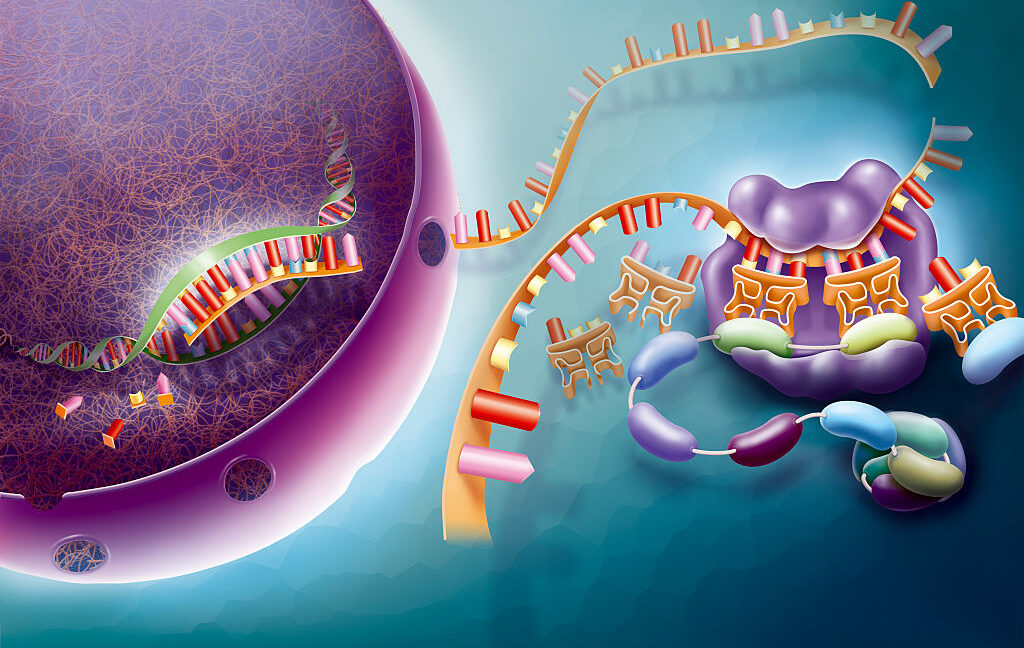Science
AI Struggles to Decode Gene Activity Despite Promises of Precision

Recent research highlights significant limitations in artificial intelligence (AI) tools when applied to the complex field of biology. A study conducted by researchers from Heidelberg, including Constantin Ahlmann-Eltze, Wolfgang Huber, and Simon Anders, found that AI software designed to predict gene activity under various conditions failed to outperform basic prediction methods.
While AI has shown promise in specific biological applications, such as designing enzymes to break down plastics and creating proteins to counteract snake venom, the notion that AI can universally analyze biological data is premature. The study examined several AI packages aiming to forecast changes in gene activity, yet their performance was disappointing.
Complexities of Gene Activity
The human genome consists of approximately 20,000 genes, but not all are active in every cell. Gene activity varies based on cell type and environmental conditions. For instance, some genes remain consistently active, while others are conditionally activated. Over the years, extensive research has mapped gene activities across various cell types and conditions, providing a foundation for training AI models.
The researchers utilized what are known as “single-cell foundation models,” which are trained on gene activity data from individual cells, aiming to predict how gene activity might change when certain genes are altered. This approach is crucial as it can offer insights into the complex relationships between different genes and their activities.
Despite the advanced nature of these AI models, the study revealed they struggled significantly in predicting intricate changes in gene interactions. When examining the effects of altering one or two genes using CRISPR technology, the AI systems did not surpass the predictions made by a very simple model that assumed no changes would occur.
Findings and Implications
The researchers conducted experiments where they activated one or two genes and used the resulting data to assess the AI’s predictive capabilities. They compared the AI predictions against two basic models: one that predicted no changes and another that proposed additive effects from simultaneous gene activations. The results were clear: all AI models exhibited a prediction error that was substantially higher than the additive baseline.
In their conclusion, the researchers noted, “As our deliberately simple baselines are incapable of representing realistic biological complexity yet were not outperformed by the foundation models, we conclude that the latter’s goal of providing a generalizable representation of cellular states and predicting the outcome of not-yet-performed experiments is still elusive.”
While the findings indicate that AI’s current capabilities in understanding gene activity are limited, this does not suggest that future advancements are impossible. The study serves as a reminder of the challenges inherent in biological research and underscores the necessity for continued experimentation and refinement of AI applications in this field.
As excitement grows around AI’s potential, this research emphasizes the importance of cautious optimism. The complexity of biology cannot be underestimated, and the path to developing AI systems that can reliably interpret biological data remains a significant challenge. The full details of the study are published in Nature Methods in 2025.
-

 World5 months ago
World5 months agoSBI Announces QIP Floor Price at ₹811.05 Per Share
-

 Lifestyle5 months ago
Lifestyle5 months agoCept Unveils ₹3.1 Crore Urban Mobility Plan for Sustainable Growth
-

 Science4 months ago
Science4 months agoNew Blood Group Discovered in South Indian Woman at Rotary Centre
-

 World5 months ago
World5 months agoTorrential Rains Cause Flash Flooding in New York and New Jersey
-

 Top Stories5 months ago
Top Stories5 months agoKonkani Cultural Organisation to Host Pearl Jubilee in Abu Dhabi
-

 Sports4 months ago
Sports4 months agoBroad Advocates for Bowling Change Ahead of Final Test Against India
-

 Science5 months ago
Science5 months agoNothing Headphone 1 Review: A Bold Contender in Audio Design
-

 Top Stories5 months ago
Top Stories5 months agoAir India Crash Investigation Highlights Boeing Fuel Switch Concerns
-

 Business5 months ago
Business5 months agoIndian Stock Market Rebounds: Sensex and Nifty Rise After Four-Day Decline
-

 Sports4 months ago
Sports4 months agoCristian Totti Retires at 19: Pressure of Fame Takes Toll
-

 Politics5 months ago
Politics5 months agoAbandoned Doberman Finds New Home After Journey to Prague
-

 Top Stories5 months ago
Top Stories5 months agoPatna Bank Manager Abhishek Varun Found Dead in Well









